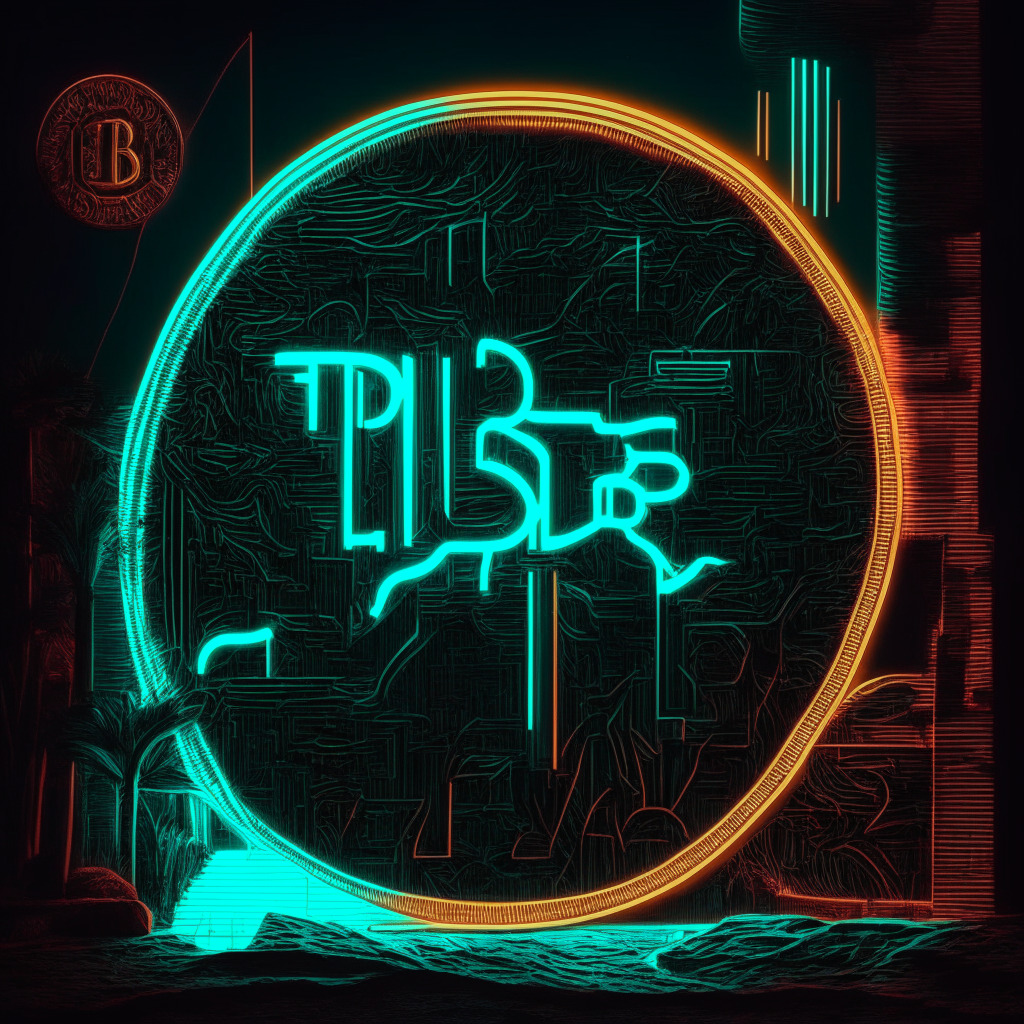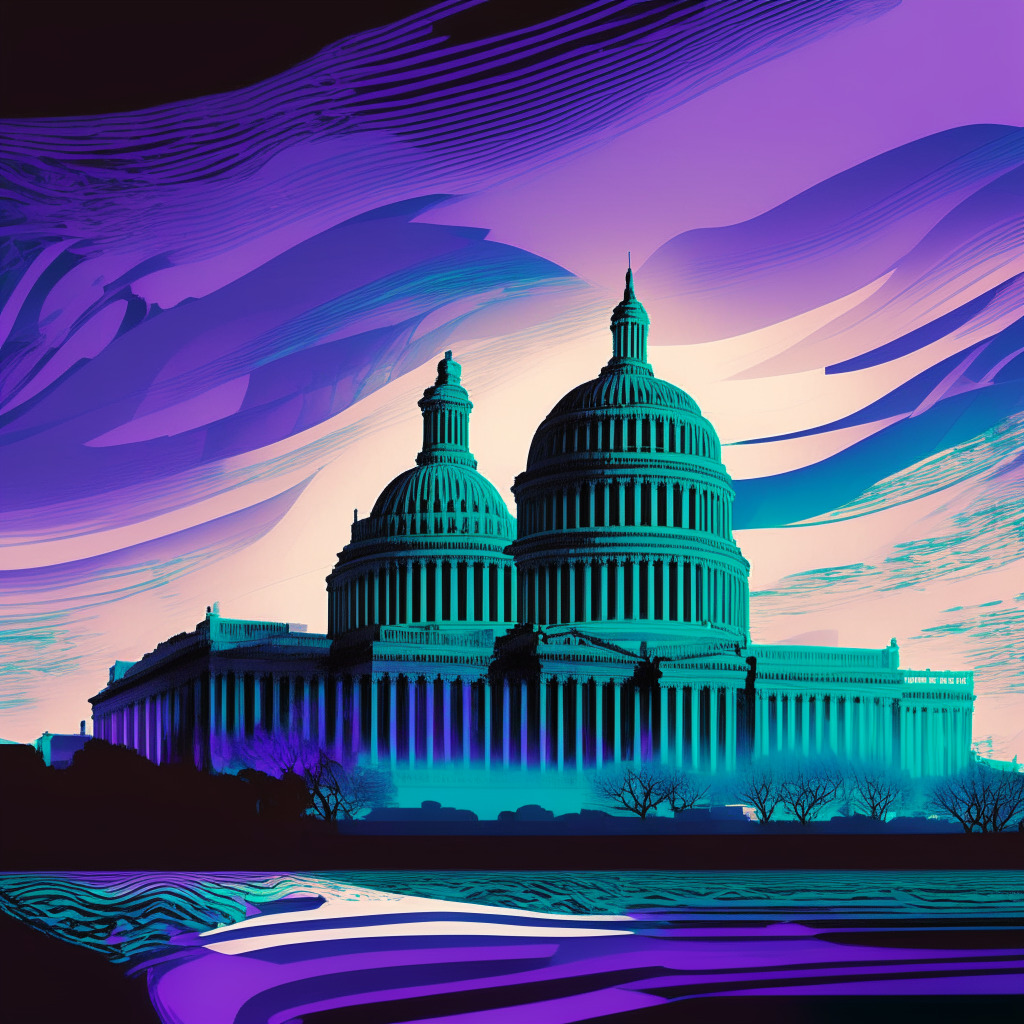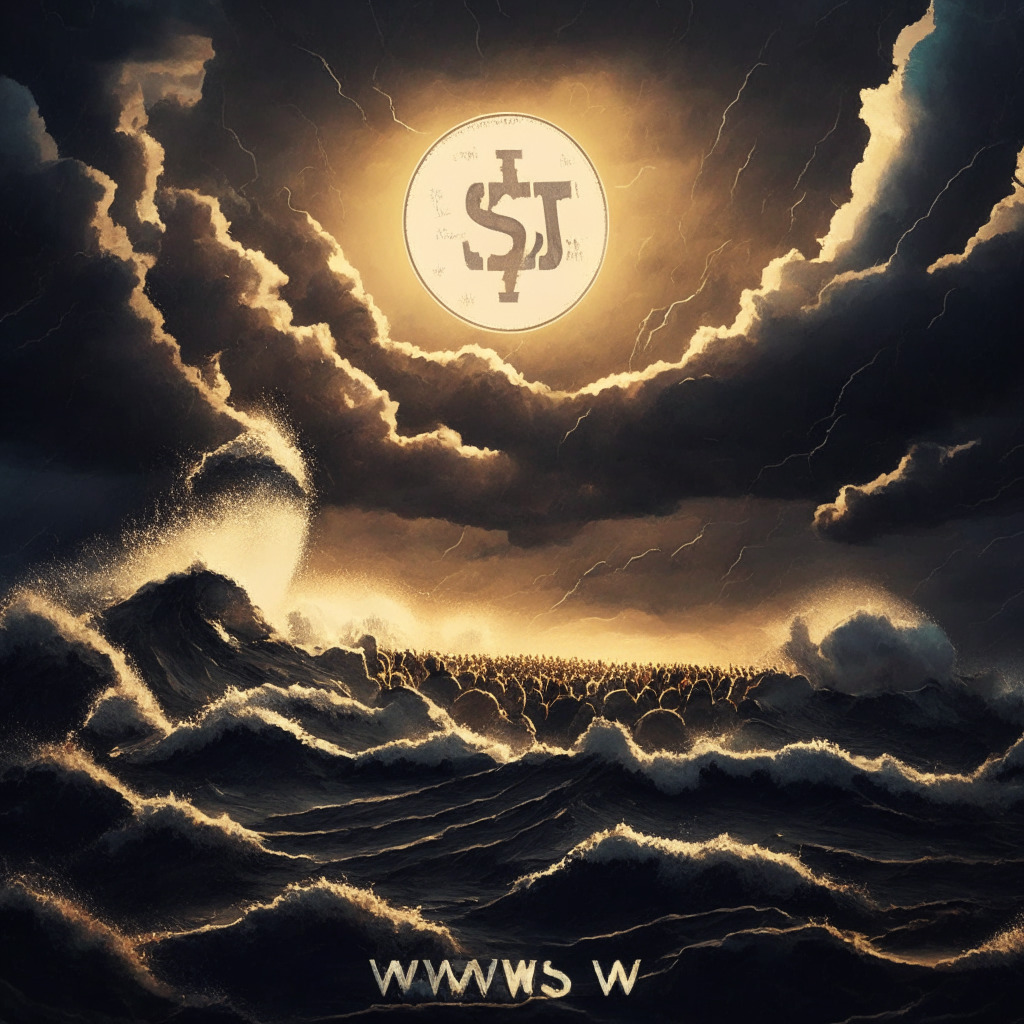“Visa partners with Solana blockchain, venturing into stablecoin payments. This sees Visa using stablecoins like USDC and blockchain networks such as Solana and Ethereum to increase cross-border settlement speed and offer more accessible options for fund transfers via Visa’s treasury.”
Search Results for: stablecoin
Foreseeing a Bitcoin Crash: Comparing Cryptocurrency Trends and Future Stability with Stablecoins
“An ominous Bitcoin price metric that previously resulted in a -25% FTX crash is repeating, centred around the BTC rate of $25,726. Market spectators prepare for a possible drop to $23,000. The Short to Long-Term Realized Value (SLRV) ratio indicates potential sales growth in ‘older’ Bitcoins, urging caution among investors. Meanwhile, stablecoin Circle’s USD Coin (USDC) now supports smooth transitions to Base and Optimism networks.”
VISA Leverages Solana Blockchain and USDC Stablecoin for Faster International Payments
“VISA has enhanced its stablecoin settlement ability with Circle’s USDC stablecoin on the high-speed Solana blockchain, making it one of the first financial institutions to harness Solana for scaled settlements. VISA’s integration of stablecoins like USDC on global blockchain networks aims to improve international settlements speed and give clients a modern option to conveniently transact funds.”
Stablecoins: The Potential Game-Changer in Global Financial Services and Their Associated Risks
“The rapid growth of digital currency market showcases colossal potential of stablecoins, with Brevan Howard Digital predicting their scale to reach several trillions. Stablecoins could financially assist the unbanked and underbanked, provide an economic safe haven, and even challenge global financial services.”
Unraveling TRYB: The Turkish Lira-Pegged Stablecoin’s Unprecedented Rise and Lingering Controversies
“Emerging from traditional U.S. dollar-pegged digital assets is TRYB, a new stablecoin backed by the volatile Turkish lira. Issued by the Turkey-based fintech company BiLira, this Ethereum-based stablecoin offers a unique transactional instrument for users, navigating around fiat counterparts’ volatility. However, suspicions surround its operations, and the stablecoin’s path is marked with both opportunities and skepticism.”
BTC Price Defies Predictions; Stability Amid Market Volatility & Future of Stablecoins
“As BTC price holds steady on a 200-day trend line, traders see this as a potential market low. Despite BTC retracting from highs, it hasn’t experienced a total reversal. Other developments in the crypto market, such as Binance’s plans to cease support for its BUSD stablecoin, influence this complex, evolving landscape.”
Dismantling Binance USD: Unveiling Binance’s Plan to Cease Support for its Stablecoin by 2024
“Binance cryptocurrency exchange plans to remove eight Binance USD trading pairs from its platform, suggesting it could cease support for the stablecoin by 2024. This stems from allegations that the stablecoin’s issuer, Paxos, produced an unregistered security. Concurrently, competitor stablecoin Tether witnesses market growth.”
BlockFi Bankruptcy: Proposed Stablecoin Switch for Trade-Only Wallets and Legal Scuffles
Bankrupt crypto lender BlockFi has requested court approval to convert “trade-only” wallet assets into stablecoins for withdrawal. Accounting for less than half a percent of all BlockFi user wallets in the U.S., these include diverse digital currencies such as Bitcoin Cash, Algorand and Dogecoin. BlockFi aims to facilitate a comprehensive withdrawal process through this method.
Circle’s Stablecoin USDC Set to Launch on the Base Network: A Leap Forward or a Leap of Faith?
Circle’s CEO Jeremy Allaire recently announced a significant shift for the company’s U.S. dollar-pegged stablecoin, USDC, which will now launch natively on the Base network. This aims to gradually reduce the need for a bridged coin backed by the Ethereum variant. Despite the development, underlying trust issues remain, emphasising the stability of the Base network and potential issues resulting from reliance on bridged tokens.
Colombia’s New Stablecoin nCOP: Boon or Bane for Latin America’s Remittance Market?
Num Finance has launched a stablecoin, nCOP, tied to the Colombian peso on the Polygon network. This overcollateralized fiat-backed coin is seen as a game changer for Latin American remittance recipients given its stability and yield-offering feature. Colombia’s robust remittance market provides prime opportunities to “tokenize” remittances with nCOP.
PayPal’s PYUSD Stablecoin: A Turbo Boost or Damp Squib for Crypto Adoption?
PayPal’s recently launched stablecoin, PYUSD, appeared to have a slow start with 90% of it residing in Paxos Trust’s reserves and only 7% on crypto exchange wallets. However, despite the somewhat sluggish kick-off, it’s still early days; a shift in the crypto market could significantly change PYUSD’s future prospects.
Dominating Stablecoin Market: How Tether Maintains Its Leadership Despite Regulation Tests
“Tether maintains its dominant position in the stablecoin market despite competition and regulatory challenges. With total assets at $86.1 billion, it demonstrates economic robustness, outpacing competitors such as USD Circle, and shows growing appeal among investors while weathering recent regulatory fines and market events.”
Tether’s Stablecoin Reign: Surmounting Regulatory Scrutiny, Market Competition, and Financial Accusations
“Tether’s market capitalization stands at $86.1 billion, with total assets exceeding liabilities, signifying stability and dominance over its competitors. Despite facing regulatory scrutiny and skepticism, Tether remains popular among investors due to its transparency and surplus reserves.”
Colombian Peso-Pegged Stablecoin Entry: Innovation Vs Regulation in Crypto Remittances
“Argentina-based Num Finance has introduced its third stablecoin, nCOP, pegged to the Colombian peso on Polygon, aiming at Colombia’s $6.5 billion annual remittance market. This development comes as Colombia’s central bank contemplates issuing a central bank digital currency (CBDC) to streamline remittances and protect the local financial system.”
Coinbase Acquires Stake in Circle: Betting Big on Stablecoins and Shaping Cryptocurrency Markets
Coinbase has acquired a minority stake in Circle Internet Financial and both companies dissolved their Centre Consortium associated with issuing USD Coin (USDC). Amid greater regulatory clarity, Circle will become the sole issuer of USDC and control reserve governance, facilitating its integration on various blockchains. This shifting control indicates wider stablecoin adoption in the crypto economy.
Surge in Stablecoin Use Amid Argentina’s Political Turmoil: A Deep Dive into Crypto’s Role in National Economy
Amidst Argentina’s economic crisis and hyperinflation, Argentinians are significantly increasing their purchase of stablecoins as a viable way to protect their savings. The trend, spurred by government restrictions on foreign currency buying and a depreciating peso, also sees an increasing number of transactions and salaries being paid in cryptocurrencies. The upsurge coincides with the rise of presidential candidate, Javier Milei, who holds a positive stance towards cryptocurrencies.
Coinbase and Circle Redefine Ties Amid Revised Stablecoin Structure: Exploring the Implications
Coinbase has taken an equity stake in Circle amid a halt in the USDC Centre Consortium’s operations, due to a more regulated environment, removing the need for a separate governance body. Circle will now be responsible for regulatory compliance and controlling the stablecoin’s smart contract keys, while plans are underway for USDC’s expansion onto six new blockchains.
Navigating Uncharted Territory: A Comparative Analysis of Stablecoin Regulation Worldwide
“Recent news around CoinDesk and the temporary pause of their ‘Money Reimagined’ newsletter highlight the challenges faced by crypto media platforms. In this backdrop, a closer look at the regulatory landscapes shows varying global response to cryptocurrencies, notably stablecoins.”
Coinbase Halts Trading of Stablecoins Amid Tough Crypto Regulations in Canada
Coinbase, a major cryptocurrency exchange, announces the suspension of trading for three popular stablecoins in Canada starting from August 31. Despite the trading halt, the wallets will still be functional for deposits and withdrawals. However, Canada’s stern stance towards crypto service providers and stringent regulations have led to many crypto exchanges, including Binance and OKEx, pulling out from the Canadian market.
Tether Discontinues Bitcoin, Kusama and Bitcoin Cash-Based Stablecoins: Impact on Crypto Landscape
“Tether, the issuer of popular stablecoin USDT, discontinues its Bitcoin, Kusama, and Bitcoin Cash-based stablecoins due to low usage. It reflects Omni’s crucial role and considers reinstating Omni Layer version if utility increases. Also, Tether plans to introduce a new Bitcoin-based smart contract system, “RGB”.”
Canada’s Crypto Conundrum: The Fate of Stablecoins Amidst Surging Regulations
“Crypto exchange Coinbase is set to suspend trading of stablecoins USDT, DAI, and RAI in Canada as part of major service changes. Despite Coinbase’s recent expansion in Canada, increasing regulations have caused reconsideration of operating strategies within the country’s crypto market.”
Regulatory Ripples: The SEC’s Case against Ripple and the Future of Stablecoins in Canada
“Judge Torres’s ruling in the ongoing Ripple case might bring regulatory clarity to the crypto community. Meanwhile, Coinbase suspended certain stablecoins in Canada, raising questions on whether this regulatory rigour might affect the growth of blockchain’s future or secure the crypto future.”
PayPal Enters Stablecoin Market: Catalyst for Regulatory Clarity or a Step Away from Decentralization?
“PayPal’s stablecoin, PYUSD, built on the Ethereum network, signals a major step towards crypto adoption in traditional finance. Despite concerns about its centralized structure, PYUSD could clarify crypto regulations, accelerate token usage, consolidate crypto payment with traditional finance, and encourage wider adoption of blockchain technology.”
The Ripple Effect of PayPal’s PYUSD: Potentially Forcing a Shift in Stablecoin Regulation Debate
The launch of PYUSD, a stablecoin backed by PayPal with over 430 million users, may accelerate crypto adoption and prompt a shift in U.S. policy towards crypto regulation. Despite previous hesitations, the massive user base might force lawmakers to urgently develop a comprehensive regulated framework for stablecoins, heralding a new era of American crypto companies demanding inclusion in economic life.
Navigating the Stablecoin Storm: The Push for Regulation Amid Market Instability
Circle’s Chief Strategy Officer, Dante Disparte, emphasizes the need for federal regulation of stablecoins amid market volatility and banking mishaps. Amidst concerns of “counterfeit US dollars using cryptographic methods”, Disparte sees regulation as a safeguard for investors and a protection of monetary policy.
New Regulatory Landscape for Stablecoins: Balancing Investor Protection with Innovation
The Monetary Authority of Singapore (MAS) has unveiled a regulatory framework for stablecoins, providing guidelines for issuers on value stability, capital, and redemption. This move, which could bring security while potentially stifling small-scale startups, reflects a global trend in digital currency regulation.
Balancing Act: Singapore’s MAS Stablecoin Regulations and the Impact on Blockchain Evolution
Singapore’s Monetary Authority is reinforcing its blockchain future with revised stablecoin regulations, enforcing value stability. Despite concerns about limiting scope, these regulations aim to boost confidence and security while fostering blockchain advancement in a rapidly progressing digital currency landscape.
Singapore Central Bank’s Stablecoin Guidelines: Pros, Cons and the Future of Blockchain Regulation
Singapore’s central bank, the MAS, unveils its regulatory framework for stablecoins, endorsing a three business day timeline for single-currency stablecoin transfers, similar to regular domestic money transfers. Critics argue this fails to fully leverage blockchain’s instantaneous transaction capabilities, suggesting regulatory flexibility is needed to harness the technology’s full potential.
Regulating the Future: Implications of Singapore’s Revised Framework for Stablecoins
Singapore’s central bank, the Monetary Authority of Singapore (MAS), introduced a revised regulatory framework for single-currency stablecoins (SCS). The new guidelines aim to guarantee stability for SCS pegged to major currencies, potentially bolstering the use of stablecoins as a trusted digital medium of exchange.
Navigating Uncharted Waters: PayPal’s Foray into Stablecoin with PYUSD
“PayPal is venturing into cryptocurrencies with its own stablecoin, PayPal USD (PYUSD), which aims to reduce volatility. Despite competing with established stablecoins in a volatile market, PYUSD’s compatibility with future Web3 applications and PayPal’s reputation could grant legitimacy to the crypto industry.”
Stablecoins in Turmoil and the Rise of $WSM: The Game-Changing Token of 2023
“Major tremors are rocking the DEX markets with ZKSync DEX stablecoin USD+ undergoing tumultuous highs and lows, sparking extraordinary price fluctuations. Amid the turbulence, the Wall Street Memes token ($WSM) has garnered interest, amassing +$23.7m in its presale funding.”
Crypto World Crucible: Regulatory Scrutiny, PayPal’s Stablecoin, and Lawsuit Shockwaves
“Last week in crypto: Bail of former FTX CEO revoked due to alleged witness intimidation, U.S. SEC delays Bitcoin ETF decision and plans Ripple Labs lawsuit appeal. PayPal reveals Ethereum-based stablecoin, but gains mixed market sentiments.”































